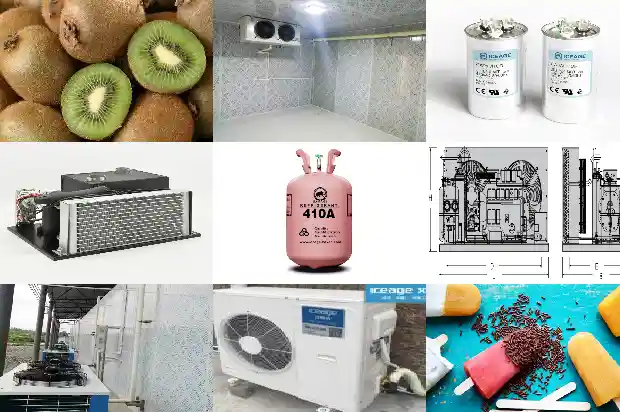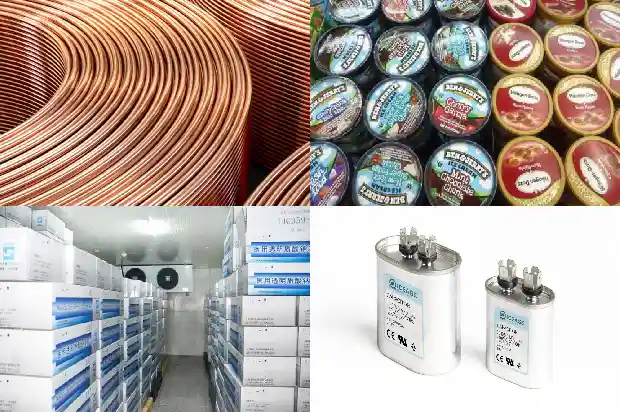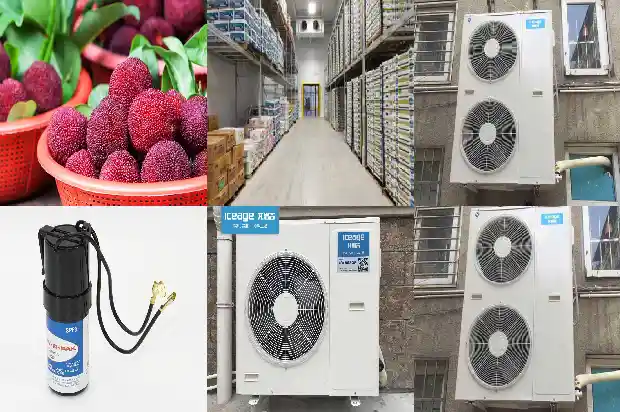Common Faults of Screw Compressor
2024-09-01
Screw refrigeration compressor is a positive displacement compressor. It compresses gas by the change of volume. The compressor uses two screws with spiral flutes placed in the machine body to mesh and rotate, and cooperates with the inner wall of the machine body and the inner walls of the suction and exhaust end seats, resulting in the change of tooth space volume, thus completing the process of gas inhalation, compression and discharge.
Features of screw refrigeration compressor:
Simple structure, few mechanical parts, high strength and wear resistance of rotor bearings, etc.;
Forced gas transmission, that is, the displacement is almost unaffected by the exhaust pressure;
It can still maintain high efficiency in a wide range of working conditions;
The use of slide valve regulation can realize stepless energy regulation and is not sensitive to liquid inlet.
Simple structure, few mechanical parts, high strength and wear resistance of rotor bearings, etc.;
Forced gas transmission, that is, the displacement is almost unaffected by the exhaust pressure;
It can still maintain high efficiency in a wide range of working conditions;
The use of slide valve regulation can realize stepless energy regulation and is not sensitive to liquid inlet.
Screw refrigeration compressors are now widely used in refrigeration, cold storage, heating, ventilation and air conditioning. This article summarizes common faults and causes, hoping to be helpful to you.
I. Excessive exhaust pressure
- The inlet water temperature of the condenser is too high or the flow rate is insufficient;
- There is air or non-condensable gas in the system;
- The copper tubes of the condenser are seriously fouled;
- Excessive refrigerant charging;
- The intake valve on the condenser is not fully opened;
- The suction pressure is higher than normal;
- Water pump failure.
II. Low exhaust pressure
- Excessive water flow through the condenser;
- The inlet water temperature of the condenser is too low;
- A large amount of liquid refrigerant enters the compressor;
- Insufficient refrigerant charging;
- Suction pressure is lower than standard.
III. High suction pressure
- Excessive refrigerant charging;
- When at full load, a large amount of liquid refrigerant flows into the compressor.
IV. Low suction pressure
- The refrigerant liquid outlet valve of the condenser is not fully opened;
- The refrigerant filter is blocked;
- The expansion valve is improperly adjusted or malfunctioning;
- Insufficient refrigerant charging;
- Excessive lubricating oil circulates in the refrigeration system;
- The inlet water temperature of the evaporator is too low;
- Insufficient water flow through the evaporator.
V. The compressor stops due to high pressure protection
- Insufficient water flow through the condenser;
- The copper tubes of the condenser are blocked;
- Excessive refrigerant charging;
- The high pressure protection set value is incorrect.
VI. The compressor stops due to main motor overload
- Too high or too low voltage and unbalanced phases;
- Excessive exhaust pressure;
- Too high return water temperature;
- Faulty overload component;
- Short circuit of main motor or wiring base.
VII. The compressor stops due to main motor temperature protection
- Too high or too low voltage;
- Excessive exhaust pressure;
- Too high return water temperature of chilled water;
- Insufficient refrigerant charging;
- Faulty temperature protection device;
- The gas inlet valve of the condenser is closed.
VIII. The compressor stops due to low pressure protection
- The refrigerant filter is blocked;
- Expansion valve failure;
- Insufficient refrigerant charging;
- The liquid outlet valve of the condenser is not opened.
IX. The compressor cannot operate
- The overload protection is disconnected or the fuse of the control circuit is blown;
- Poor contact of the control circuit;
- The coil of the compressor relay is burned out;
- Wrong phase.
X. The unloading system cannot work
- Thermostat failure;
- Unloading solenoid valve failure;
- Damage to the unloading mechanism.
XI. Large starting load or inability to start
- Excessive exhaust pressure;
- Leakage of exhaust check valve;
- Energy adjustment not at zero position;
- Excessive oil or liquid accumulation in the machine;
- Partial mechanical wear;
- Faulty pressure relay or too low adjusted pressure.
XII. Continuous vibration after the unit is started
- The anchor bolts of the unit are tightened;
- The axis of the compressor and the motor is misaligned and eccentric;
- The rotor of the compressor is unbalanced;
- The unit and the pipeline have the same vibration frequency and resonate;
- Poor coupling balance.
XIII. Vibration occurs for a short time after the unit is started and then stabilizes:
- Excessive inhalation of lubricating oil or liquid;
- Liquid hammer occurs due to oil accumulation in the compressor.
XIV.

- Foreign matter in the rotor;
- Thrust bearing wear and rupture;
- Sliding bearing wear, rotor and casing wear;
- Loose operating connections (couplings, etc.);
- Cavitation of oil pump.
XV. The compressor stops automatically for no reason
- High pressure relay acts;
- Oil temperature relay acts;
- Differential pressure relay of fine filter acts;
- Control circuit failure;
- Overload.
XVI. Insufficient refrigeration capacity
- Insufficient oil injection;
- The slide valve is not in the correct position;
- Excessive suction resistance;
- Excessive machine wear clearance;
- Fault of energy regulating device.
XVII. The energy regulating mechanism does not act or is ineffective
- The four-way valve cannot work, control circuit failure;
- The oil pipeline or connector is blocked;
- The oil piston clearance is too large;
- The slide valve or oil piston is stuck;
- Low oil pressure.
XVIII. Excessive exhaust temperature or oil temperature
- Excessive compression ratio;
- Poor heat transfer effect of oil cooler;
- Inhalation of superheated gas;
- Insufficient oil injection.
XIX.

- Heating of the friction part of the body;
- Inhalation of superheated gas;
- Excessive compression ratio;
- Poor heat transfer effect of oil cooler.
XX. Large oil consumption
- Excessive oil in the primary oil separation;
- There is oil return in the secondary oil separator.
XXI. Low oil pressure
- Improper adjustment of oil pressure regulating valve;
- Excessive oil injection;
- Excessive or insufficient oil quantity;
- Internal oil leakage;
- Rotor wear, reduced efficiency of oil pump;
- Unsmooth oil circuit (blockage of fine filter);
- Insufficient oil quantity or poor oil quality.
XXII. Oil level rises
- Refrigerant is dissolved in oil;
- Liquid refrigerant enters.
XXIII. When the unit is shut down, the compressor reverses continuously (several reversals are normal).
- The suction check valve is stuck and not closed;
- The spring of the suction check valve is insufficiently elastic.

Related Articles
- Basic Faults and Preventive Maintenance of Water - cooled Units
- Composition and Common Faults of Screw Refrigeration Compressors
- Common Faults and Solutions of Central Air - conditioning Chiller Units
- Common Faults of Industrial Chillers
- Common Faults and Corresponding Solutions of Chillers During Use
- Analysis and Troubleshooting of Common Faults in Air - source Heat Pumps
- Maintenance Methods for Faults in Screw Refrigeration Air - conditioner Compressors
- Common Faults and Troubleshooting Methods of the Moving Mechanism of Piston Compressors
- Analysis of Common Faults in Compressor Overcurrent and Burnout
- What are the reasons for the inactivity of the automotive air conditioning compressor? What are the common faults?
- Common Faults of HVAC Fan Coil Units
- Common Operating Faults and Treatment Methods of Centrifugal Compressors
- Common Four Faults and Replacement Methods of Scroll Compressor
- Analysis of Refrigeration Compressor Motor Faults
- Analysis and Treatment of Common Low-Pressure Faults in Chillers
- Analysis and Treatment of Common Low Pressure Faults in Chillers
- Common faults in refrigeration system (discharge temperature and pressure)
- Precautions for Commissioning of Screw Parallel Units
